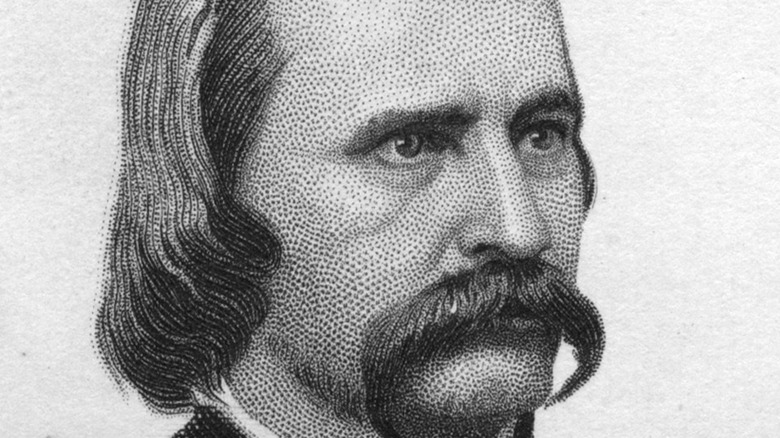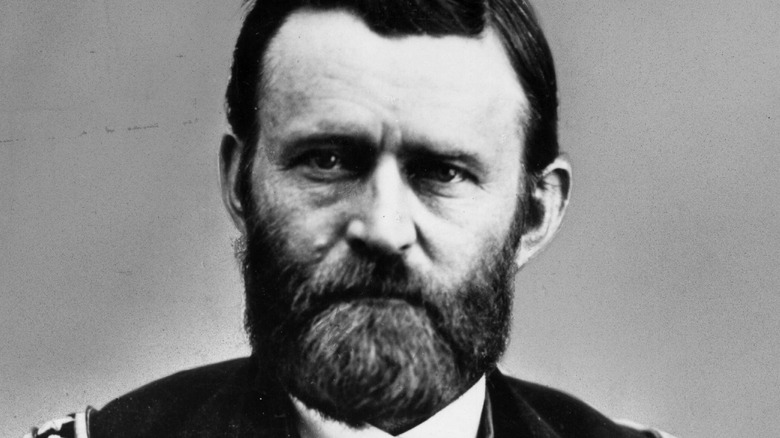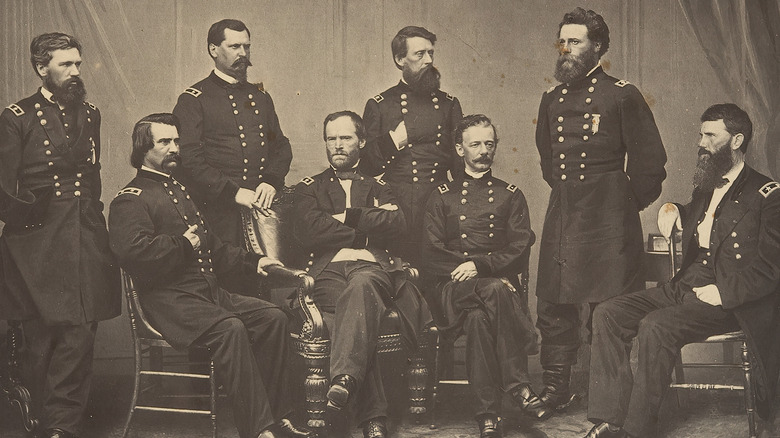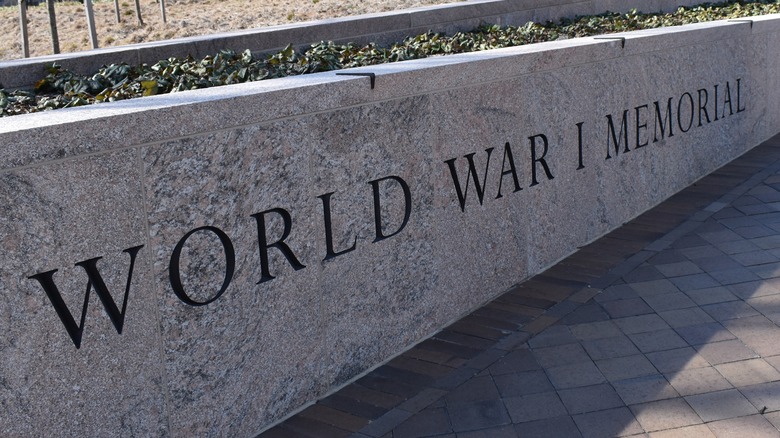The Impressive Military Background Of The Founder Of Memorial Day
Celebrated in the U.S. on the last Monday in May, Memorial Day is a time when many families gather to honor and remember loved ones and relatives who lost their lives in military service (via Britannica). At first called Decoration Day, Memorial Day first got its start in the aftermath of the American Civil War. More than 600,000 soldiers, Union and Confederate combined, are said to have died in that conflict, according to History. U.S. military history is full of fascinating and incredible stories. Among the most impressive of all is the career of the man who played a big part in starting Decoration Day, General John A. Logan.
Although Waterloo, New York was declared by congressional proclamation to be the birthplace of Decoration/Memorial Day, a few other locations lay claim to the honor, including Boalsburg, Pennsylvania; Columbus, Mississippi; and Charleston, South Carolina. Regardless of where the holiday first got started, each instance was intended to honor the Civil War dead who fought for the Union, and at least one also honored fallen Confederates, as Britannica notes. A former politician who served both in both the U.S. House of Representative and the Senate, and who later ran for vice president and even for president, Logan saw the Civil War carnage firsthand. For this reason, he felt those who died in the war should have their own holiday.
John A. Logan volunteered to fight
By 1861, war broke out between the North and the South. At first Logan — then serving in the U.S. House of Representatives from a highly partisan district — tried not to pick sides, but that proved not long lasting. Soon enough, Logan volunteered to fight for the Union. Given his background in politics, Logan was a gifted leader. Nowhere did this trait show up more so than the Civil War battlefield (via Army History). He first saw combat with the Michigan regiment at the Battle of First Bull Run, where an estimated 460 Union soldiers were killed, many more wounded, and still more were captured (via Britannica). Surviving, Logan returned home to Illinois and became colonel of the 31st Illinois regiment, serving under General Ulysses S. Grant (pictured).
Other notable Civil War battles that Logan led his troops in were Vicksburg, Corinth, and Fort Donelson, where Logan was badly wounded. By 1862, Logan resigned from the congress to accept a promotion to brigadier general. By 1862, Logan was named major general of volunteers, commanding XV Corps in the Atlanta Campaign alongside General William Tecumseh Sherman, under whom Logan would serve for the remainder of the war. Lead by Logan, Union troops singlehandedly won the Battle of Dallas, Georgia. Returning to corp command, he also led Union troops to victories at the Battle of Ezra Church and at Jonesboro. Both battles proving pivotal parts in the eventual fall of Atlanta — a major turning point in war (via Britannica).
A political general
After the fall of Atlanta, Logan (pictured among Sherman's generals, seated far left) was released from the army to campaign for Lincoln's reelection. For this reason, Logan is widely considered by historians to be one of Lincoln's best political general — a military leader who began their career first in politics. At times, this might come at the expense of military experience, but in some instances, such as with Logan, these military leaders also demonstrate exceptional skill in both domains, moving back and forth between each with relative ease (via the University of Michigan).
By 1865, though, Logan was once more in command of the command the XV Corps and marched triumphantly through the Carolinas. In July of that year, Logan returned to command the Army of the Tennessee through the conclusion of the Civil War. Declining Grant's offer for brigadier generalship in the postwar Army, Logan returned to one place where he started: the House of Representatives, and later the Senate in the 1870s and 1880s. All throughout, Logan continued to fight for the civil rights of African-Americans upon which the Civil War conflict had hinged.
Decoration Day becomes Memorial Day
From Logan's time, Decoration Day remained a time to remember the Civil War dead. But by 1917, World War I was ravaging Europe and America got involved. By the time those hostilities ended, more than 100,000 American soldiers are said to have died, and about twice that many were wounded (via the United States Department of Veterans Affairs). For this reason, Decoration Day's emphasis shifted from remembering Civil War casualties to honoring all soldiers who died in the American military in all conflicts, including World War I, as Britannica explains.
From that point forward, Decoration Day was called Memorial Day. In 1968, Memorial Day was part of Congress' Uniform Monday Holiday Act, which codified it as the last Monday in May, to create a three-day weekend for federal employees, effective 1971 (per History). Memorial Day has been observed on the last Monday in May ever since. Major General John A. Logan, who died in 1886, did not live long enough to see the official holiday he so believed in come to pass. Decoration Day did become widespread during his lifetime, however (via Britannica). Among Logan's other contributions related to the Memorial Day holiday, he founded the Grand Army of the Republic (GAR), a veterans' group, and in 1868, the General Order No. 11, came from Logan, which called for a national day of remembrance for Civil War dead — the basis for all Decoration/Memorial Day observances going forward.



